Kochel is a small resort town by a beautiful lake on the edge of the Bavarian alps.
Students at the institute stayed in rooming houses throughout the town. The quality of housing varied quite a bit, but I think our place was pretty typical. The facilities were not what Americans expected in many ways, but I can only speak of my own experience.
As I mentioned earlier, my roommate was Japanese. Her name was Sonoko Uchida, but her nickname was Peco. Her German was excellent and she had corresponded with a German pen-pal for many years. She even assisted in a German language school back home in Tokyo. In addition she was a fine roommate with a gentle sense of humor and unending patience with my stumbling attempts at communication. However much I learned over the summer was due more to her than the instruction at the institute. I'm sorry I don't have a picture from the day that she insisted on dressing me up in a kimono!
It was a stiff (and steep) walk from our house to the school. When I first arrived I was pretty soft, but by the end of the summer I was fit.
There were also plenty of hiking opportunities around town and into the mountains. I spent a lot of time walking around on my own -- even in the rain that was so common in the summer of '68.
The following pictures are of the town.
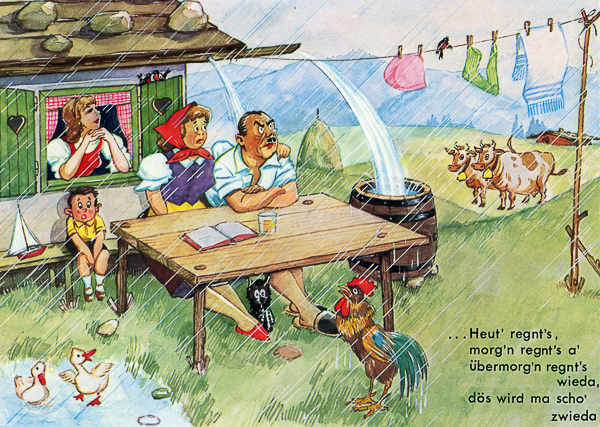
But first, I mentioned that it was a miserable summer. To commemorate it, I bought this postcard locally. The legend says, more or less, in Bayrisch: "It's raining today, it'll rain tomorrow, the day after it'll rain again, that's the way it goes." So perhaps it wasn't a very unusual summer after all!
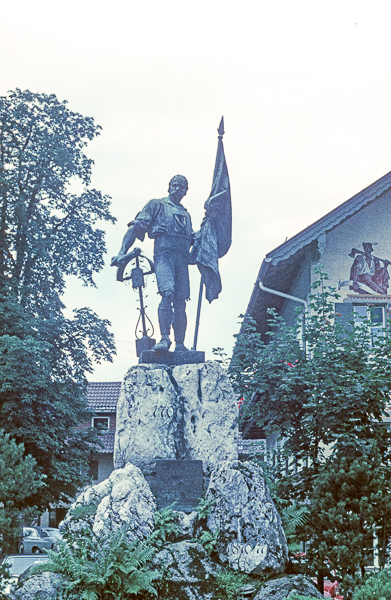
The "Schmeid von Kochel" or Smith from Kochel was a local hero. According to Wikipedia he was a legendary figure rather than a specific individual. (The German version of the article is identical but includes much more information about art featuring this individual. This is his memorial in Kochel itself.)
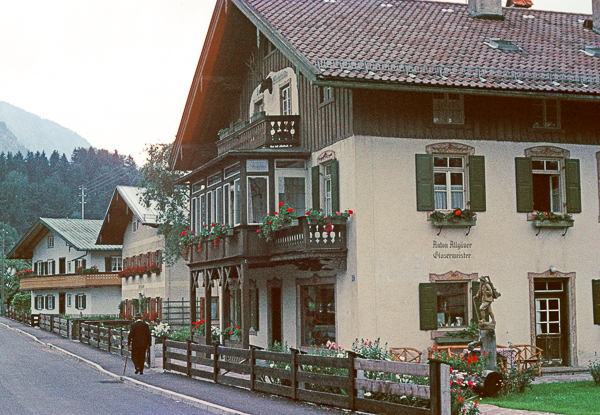
This was our home away from home during the summer. Our room was on the opposite side of the building under the eaves. It was a spacious room, but had no heat. Did I mention it was a wet and cold summer? The toilet we shared with the folks in the next room was across the hall, but we did have a sink in the room -- cold water only. Brr.
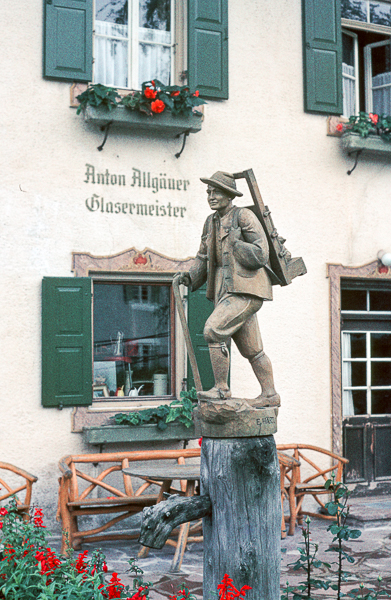
The owner was a master glazier by profession.
The bathroom was on the ground floor and we were allowed to take a bath only once a week. Peco was appalled as the Japanese are VERY fond of their daily baths, as I discovered when I visited her home some years later. We had to pay 2DM (about 50 cents) each time to cover the cost of the fuel for the wood-fired hot water heater AND feed and stock the fire.
Our assigned bath night was the same as the family, so luxuriating in a hot tub was out of the question. There were constant admonitions to hurry and not use all the hot water.
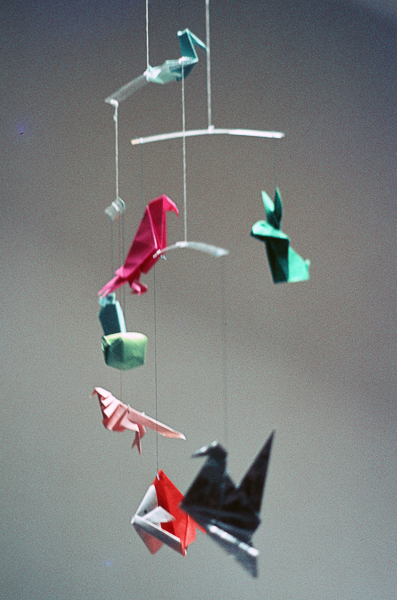
The decor in our room was basic: Two beds with heavenly German federbett comforters, a table, and a chair. For those who have never experienced federbetten, I cannot adequately describe them. It's only recently that I found an online picture (why would I have taken a picture of the bed?) and it was from a museum! The room pictured is not unlike our room in Kochel, except for the pictures on the wall and the patterned linens. Everything in our room was white.
Peco brought supplies for making origami, and she taught me many different styles. We made a batch and I fashioned a mobile to add some color to the place.
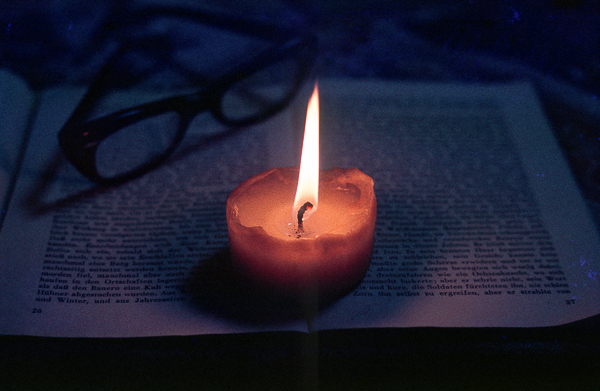
Nowadays this makes me shudder. If I wanted to read after Peco was in bed, there were no bedside lights so I would light a candle. I'm glad I didn't burn the house down!
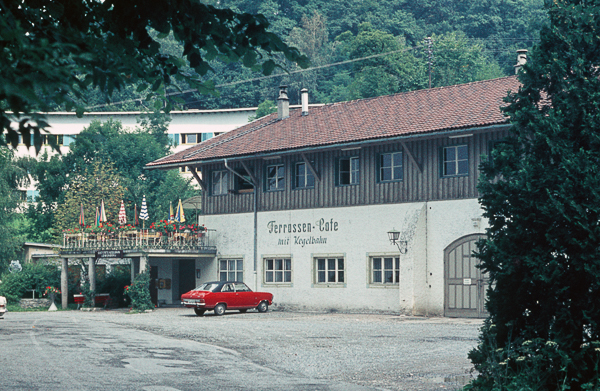
Two restaurants hosted students for dinner. The Gasthof zur Post was pictured on an earlier page. This is the other one: Terrassen Cafe mit Kegelbahn. It also housed the local bowling alley!
We were divided into two groups and rotated every two weeks.
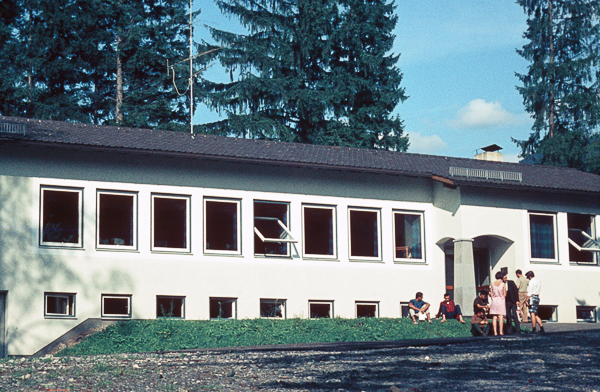
My class at the Goethe Institut met in the front left of the door where the window is open. My level was "Grundstufe Zwei," which was a step above rank beginner. Somewhere I have a certificate that qualifies me for promotion to intermediate level if I ever decide to go back.
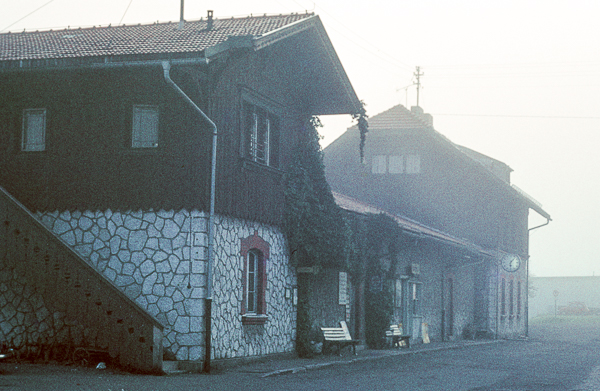
Another key location within Kochel was the Bahnhof. We were at the end of a spur line that ran south from Munich through Starnberg.
The railroad was our link to the outer world. Several times I traveled to Munich to meet up with a friend there or as a jumping-off place for excursions.
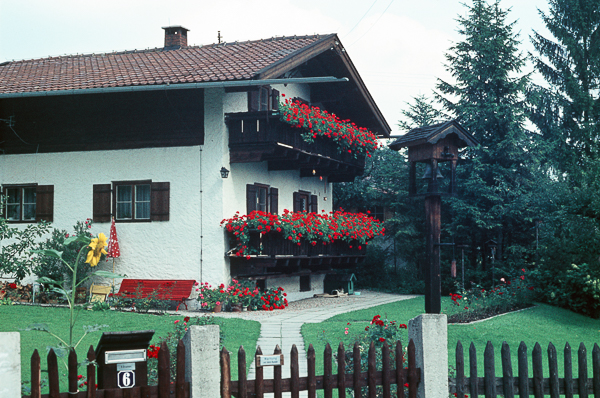
The following pictures were along the path I walked every day to class and elsewhere in Kochel. I'll use the commentary space to describe some of my fellow students (I have pictures of only a few of them).
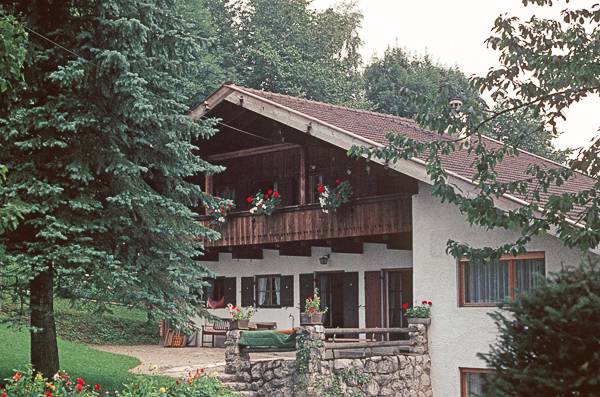
1968 was the year of the Prague Spring. A Czech couple in my class had been allowed to come to Germany to study, but had to leave their small children home with relatives -- somewhat as hostages. When the Soviets invaded their homeland during our school session, they were frantic to get status of family left behind. They left early to go home.
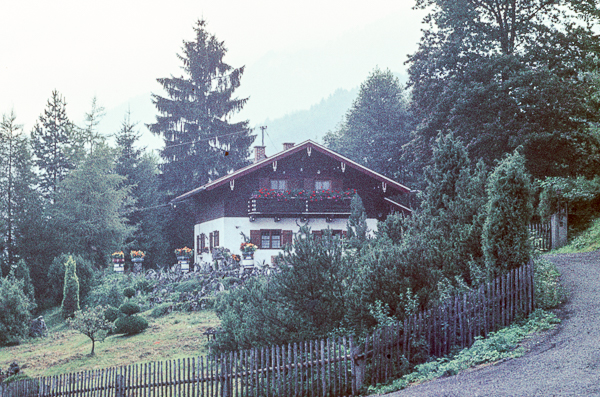
Another student in my class was a Dutch merchant marine seaman. German was to be his fifth or sixth language after Dutch, English, Flemish, French, and maybe one or two more. Although he started at our elementary level, by the end of the session he was fluently discussing history and politics with the teacher.
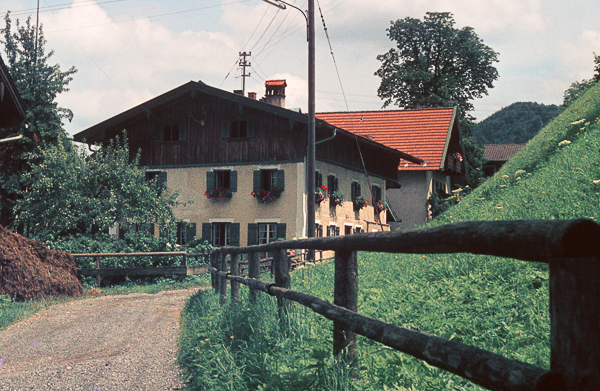
We had a small group that played bridge after supper. In addition to myself there were other Americans: one regular from NC and a Brazilian. Although we started in German with the best intentions, we eventually gave up and spoke English.
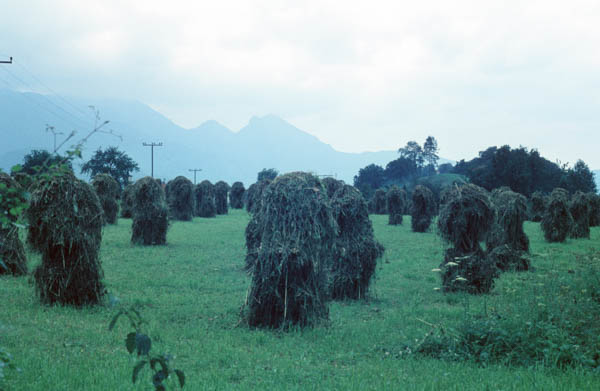
Other nationalities represented included Thai, Canadian (French & Anglo), Icelandic, Tunisian (two brothers who were great drummers!), Indian, El Salvadorian, and French.
Good times.
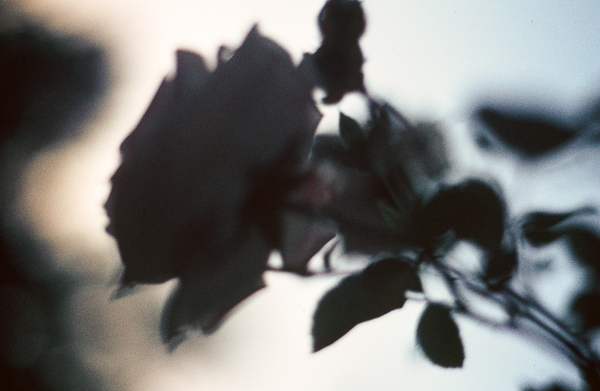
Roses were a popular shrub. I've always liked this picture.
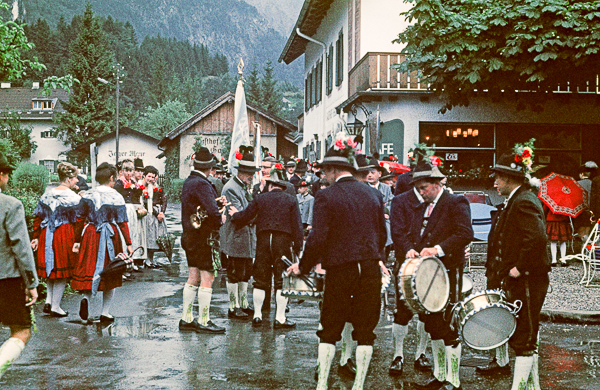
I don't remember what the celebration was all about, but one day the townspeople gathered in traditional festival dress for a parade. As usual it was raining, but that didn't dampen anyone's spirits.
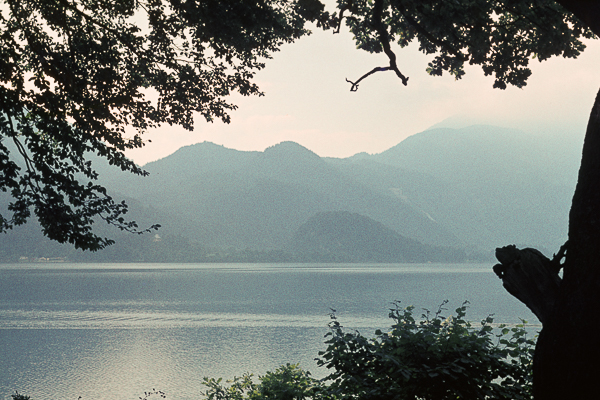
Kochel am See means "Kochel by the Lake." This is the lake. It was large and lovely. There were resort hotels scattered all along the shoreline.
There may be another Kochel somewhere else in Germany prompting the identification of this one with the lake. If so, I can't find it.
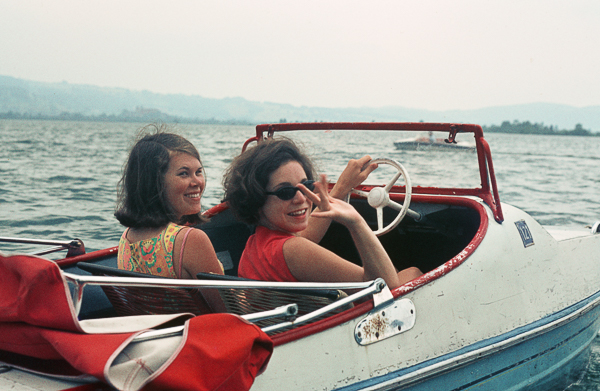
On the occasional nice day there were paddle boats (tretboot) for rent. These were two of my MBC colleagues, Betsy and Kaye.
Click your "back" button to return to the previous page or click for our picture album.